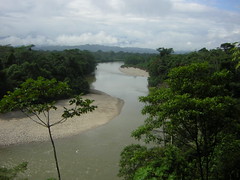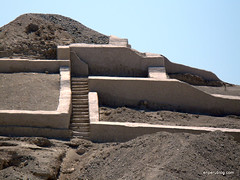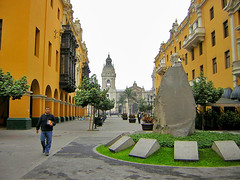The origins of the magnificent ruins of a building that we call Hatunrumiyoc are lost in time. Built with huge polygonal stones, cut and fitted with exceptional precision, it is one of the most impressive structures of ancient Cusco. Its imposing walls hide a number of surprises, from the famous 12-Angle Stone, to shapes of local animals built into the structure itself.
Category: "Archaeology"
Surprising water engineering at Machu Picchu
The management and distribution of water in Machu Picchu is one example of the notable hydraulic engineering of the Incas and from those more ancient cultures who’s knowledge they inherited and expanded upon.
Chan Chan under constant threat
Only 5 of the 134 projects of the nine-year-old so called “master plan” have been executed to date, Repeated illegal land invasions by locals one of the principle problems for the ancient site. Chan Chan, the ancient capital city of the Chimú, was declared a UNESCO World Heritage site in 1986 because of its extraordinary architectural and historical importance. Unfortunately, the list World Heritage sites isn’t the only UNESCO list it is on.
Unlocking the secrets of the Quipus
Gary Urton. The investigator from Harvard University reveals the latest results of his investigations of the meaning of the quipu.
As I explained in this previous post, the quipu (or khipu) is a fascinating communication device used in the pre-Columbian world for everything from accounting and record keeping to, it is believed, recording detailed text… names, words, a full written language not in symbols but in lengths of string and knots tied at points along them.
Ancient Caral now a UNESCO World Heritage site
The Sacred City of Caral-Supe (Peru), the oldest centre of civilization in the Americas, was inscribed on UNESCO’s World Heritage List by the World Heritage Committee, chaired by María Jesús San Segundo, the Ambassador and Permanent Delegate of Spain to UNESCO.
Application submitted to destroy ancient Chan Chan ruins
It almost defies belief that a mining company would summit an application to mine for iron ore in the ruins of the capital of the once powerful Chimu kingdom. The sprawling archaeological zone of Chan Chan is a UNESCO World Heritage site and one of the largest adobe constructions on earth.
Thankfully, Peru’s geological authority in charge of granting permission (INGEMMET) has no plans to approve this particular application.
Kusikancha – Inca Cusco revealed
Much of the ancient layout of Cusco has been lost beneath its more recent colonial buildings. Just a few of the narrow streets with central drainage channels remain and almost nothing can be seen of the city layout known as the “chanchas”. That was, until now.
Pre-Inca tomb found at Salapunku, Machu Picchu reserve
Archaeologists from the National Institute of Culture (INC) have found a pre-Inca tomb at the Salapunku archaeological site located in the protected area of Machu Picchu.
The Salapunku site, located above the railway line than today takes visitors to the ruins of Machu Picchu, is home to a bridges, an aqueducts and now pre-Inca tombs.
The discovery was made in the area known as Zone III and the tombs were located in a sheltered part of a rock face. The burial is thought to be of the Quillke culture that lived here before the Incas, as Quillke pottery was found alongside the bones, as well as fragments of obsidian.
Ancient temple wall discovered, shaped like Andean chakana
Ventarrón, a 4000 year old ceremonial site with spectacular murals painted by ancient peoples who lived during the dawn of civilisation, has given up another stunning prize.
Huarco temple complex of Vilcahuasi
I couldn’t believe what I was seeing when I finally looked out around me from atop the huge mound of sand I had just climbed. What I was standing on was clearly the remains of an ancient pyramid, and next to it was another and another and another after that. I counted twelve in total.
Huaca San Borja
It was not as important or majestic as the other huacas that once stood nearby, specifically those of the grand Limatambo not far away, but at least it breaks the mould of the modern district of San Borja, a district only a little more than 30 years old, built over the farm land that once surrounded this, the Huaca San Borja.
Lost city of Cerro Azul
When the Incas arrived in the Cañete valley they found it fiercely defended by the Guarco (Huarco) people who lived there. It took future emperor Túpac Yupanqui years to subdue them, even going as far as to temporarily recreate the imperial capital of Cusco nearby as a base to attack from, moving the empire’s army there in the process. There were Huarco fortresses dotted across the fertile valley, and these fiercely defensive people had 20,000 warriors at their disposal, reading to die for their freedom – but life for the Huarco wasn’t always like this.



![Andean women’s football championships [Featured]](http://farm4.static.flickr.com/3123/2686374230_4b1aac1b08_m.jpg)






